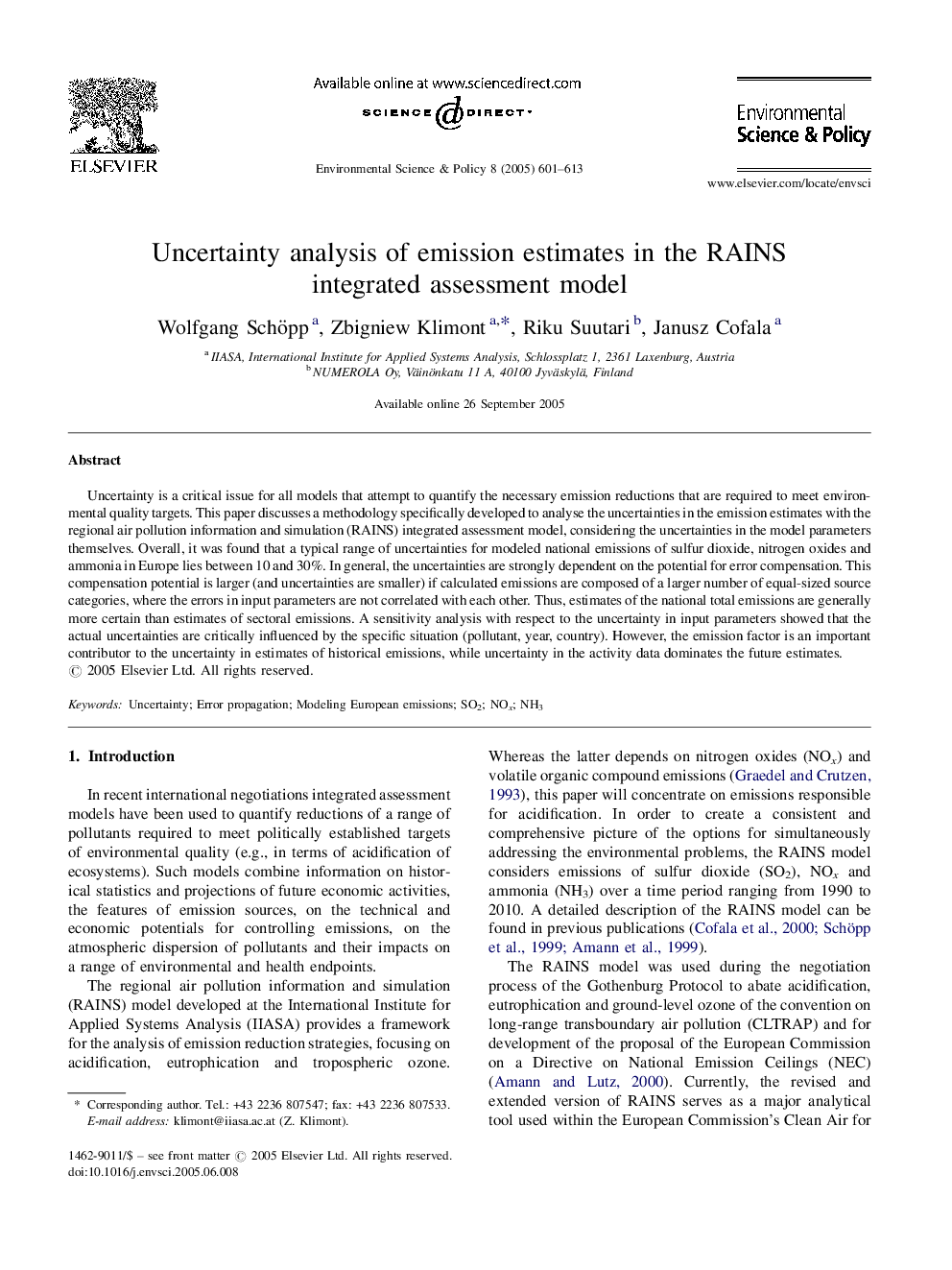| Article ID | Journal | Published Year | Pages | File Type |
|---|---|---|---|---|
| 10504691 | Environmental Science & Policy | 2005 | 13 Pages |
Abstract
Uncertainty is a critical issue for all models that attempt to quantify the necessary emission reductions that are required to meet environmental quality targets. This paper discusses a methodology specifically developed to analyse the uncertainties in the emission estimates with the regional air pollution information and simulation (RAINS) integrated assessment model, considering the uncertainties in the model parameters themselves. Overall, it was found that a typical range of uncertainties for modeled national emissions of sulfur dioxide, nitrogen oxides and ammonia in Europe lies between 10 and 30%. In general, the uncertainties are strongly dependent on the potential for error compensation. This compensation potential is larger (and uncertainties are smaller) if calculated emissions are composed of a larger number of equal-sized source categories, where the errors in input parameters are not correlated with each other. Thus, estimates of the national total emissions are generally more certain than estimates of sectoral emissions. A sensitivity analysis with respect to the uncertainty in input parameters showed that the actual uncertainties are critically influenced by the specific situation (pollutant, year, country). However, the emission factor is an important contributor to the uncertainty in estimates of historical emissions, while uncertainty in the activity data dominates the future estimates.
Related Topics
Physical Sciences and Engineering
Energy
Renewable Energy, Sustainability and the Environment
Authors
Wolfgang Schöpp, Zbigniew Klimont, Riku Suutari, Janusz Cofala,
